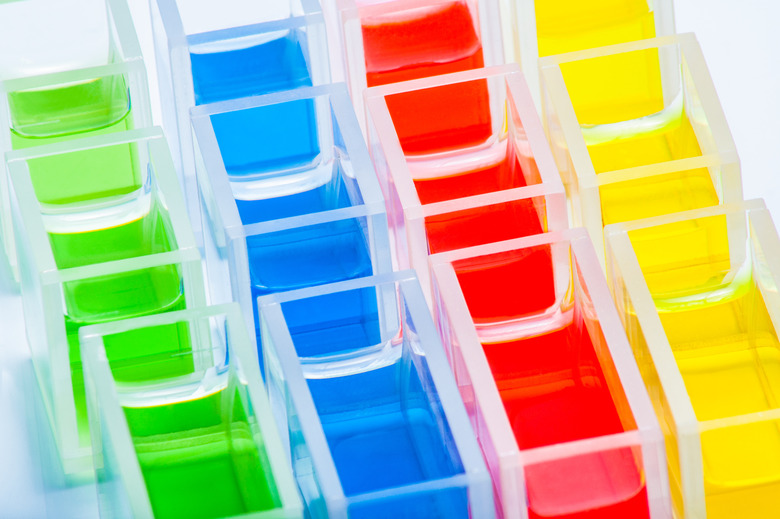What Is A Calorimeter & What Are Its Limitations?
Chemists often need to know how much heat energy a particular reaction releases or absorbs. This measurement helps them understand more about why the reaction occurs and helps them make useful predictions. Calorimeters are instruments that measure the amount of heat released or absorbed by the contents during a reaction. It's easy to make a simple calorimeter, but the instruments used in labs are typically more precise.
TL;DR (Too Long; Didn't Read)
Calorimeters let you measure the amount of heat in a reaction. Their main limitations are losing heat to the environment and uneven heating.
The Functions of a Calorimeter
The Functions of a Calorimeter
Basically, a calorimeter measures the change in temperature of the calorimeter and its contents. After the calorimeter calibration, the chemist will already have a number called the calorimeter constant, which shows how much the temperature of the calorimeter changes per amount of heat added. Using this information and the mass of the reactants, the chemist can determine how much heat gets released or absorbed. It's important that the calorimeter minimizes the rate of heat loss to the outside, since rapid heat loss to the surrounding air would skew the results.
Different Types of Calorimeters
Different Types of Calorimeters
It's easy to make a simple calorimeter yourself. You need two Styrofoam coffee cups, a thermometer or a lid. This coffee-cup calorimeter is surprisingly reliable and thus is a common feature of undergraduate chemistry labs. Physical chemistry laboratories have more sophisticated instruments such as "bomb calorimeters." In these devices, the reactants are in a sealed chamber called the bomb. After an electrical spark ignites them, the change in temperature helps determine the heat lost or gained.
Calibration of a Calorimeter
Calibration of a Calorimeter
To calibrate a calorimeter, you can use a process that transfers a known amount of heat such as measuring the temperature of some hot and cold water. For example, you can mix cold and hot water in your coffee-cup calorimeter. Next, you measure the temperature over time and use linear regression to calculate the "final temperature" of the calorimeter and its contents. Subtracting the heat gained by the cold water from the heat lost by the hot water yields the heat gained by the calorimeter. Dividing this figure by the temperature change of the calorimeter gives its calorimeter constant, which you can use in other experiments.
Limitations of Calorimetry
Limitations of Calorimetry
No calorimeter is perfect because it can lose heat to its surroundings. Although bomb calorimeters in laboratories have insulation to minimize these loses, it's impossible to stop all heat loss. Moreover, the reactants in the calorimeter may not be well-mixed, which leads to uneven heating and another possible source of error in your measurements.
Aside from possible sources of error, another limitation involves the kinds of reactions you can study. For example, you may want to know how the decomposition of TNT releases heat. This kind of reaction would be impossible to study in a coffee-cup calorimeter and might not even be practical in a bomb calorimeter. Alternatively, a reaction may take place very slowly such as the oxidation of iron to form rust. This kind of reaction would be very difficult to study with a calorimeter.
Cite This Article
MLA
Brennan, John. "What Is A Calorimeter & What Are Its Limitations?" sciencing.com, https://www.sciencing.com/calorimeter-its-limitations-8290898/. 27 April 2018.
APA
Brennan, John. (2018, April 27). What Is A Calorimeter & What Are Its Limitations?. sciencing.com. Retrieved from https://www.sciencing.com/calorimeter-its-limitations-8290898/
Chicago
Brennan, John. What Is A Calorimeter & What Are Its Limitations? last modified March 24, 2022. https://www.sciencing.com/calorimeter-its-limitations-8290898/
